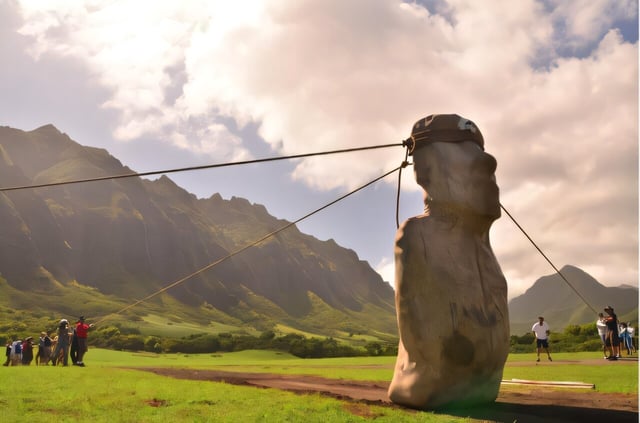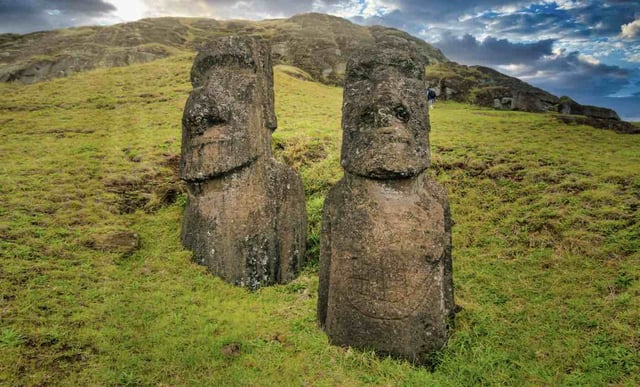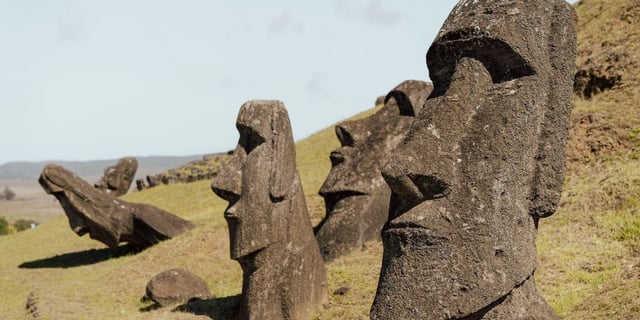Overview
- The paper by Carl P. Lipo and Terry L. Hunt in the Journal of Archaeological Science argues the moai were transported upright using rope in a controlled, rocking zig-zag motion.
- Systematic study of 962 statues, including 62 along ancient roads, and high-resolution 3D models identify wide D-shaped bases and a forward lean that facilitate stable rocking.
- A field test moved a 4.35-ton replica 100 meters in 40 minutes with 18 people, demonstrating the practicality and efficiency of the upright ‘walking’ technique.
- Island roads about 4.5 meters wide with a concave profile appear to have stabilized the statues during transport, with overlapping and parallel segments suggesting sequential path clearing.
- The findings challenge prone transport theories using rollers or sleds, and spatial patterns of unfinished or broken moai near the quarry are reported as consistent with transport failures that warrant further study.


